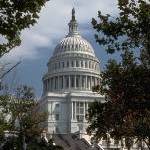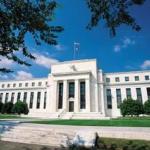Full Commitment
This week provided additional confirmation that America is fully committed to a program of currency destruction. Decades of terminal intelligence have gotten us to this special place. We will have more on this in a moment. But first some words on being fully committed.
 Say hello to the provider of bacon… lots of bacon, in this case. [PT]
Say hello to the provider of bacon… lots of bacon, in this case. [PT]
We have never gutted a hog. But we hear it is a bloody mess. The volume of blood that gushes out – as in, ‘bleeding like a stuck pig’ – is profuse.
Contemplating a bacon and egg breakfast plate reveals two types of commitments. That of the chicken. And that of the pig. You may know this allegory. The chicken is involved in providing for the breakfast. It provides the eggs. But the pig is fully committed to it. For the pig must perish to provide the bacon.
America is presently bleeding like a stuck pig. Public and private debts are hemorrhaging a bloody mess. For example, the budget deficit for fiscal year 2020 which concluded on September 30 was $3.3 trillion. By this, the federal government spent double what it generated via tax receipts and other confiscatory measures. And the federal debt held by the public is now well over 100 percent of GDP.
 The federal budget deficit, quarterly, as of Q2 2020. [PT]
The federal budget deficit, quarterly, as of Q2 2020. [PT]
There is no way the debt will be honestly paid. It is mathematically impossible. Nor will it be paid through an honest default. That is politically unacceptable.
The debt, however, will be paid dishonestly. It will be paid through dollar debasement. America is fully committed to this. Here’s why…
Words of Omission
Tuesday’s presidential debate has been called many things. Most descriptions have cast it in a negative light. Some political pundits used French to describe, in colorful terms, what type of show it was.
…click on the above link to read the rest of the article…




 Ralph Waldo Emerson (May 25, 1803 – April 27, 1882), who inter alia opined on consumers and the need to not only consume, but also produce. The latter activity has recently become even more severely hampered than it already was. And yet, government is spending like a drunken sailor. [PT]
Ralph Waldo Emerson (May 25, 1803 – April 27, 1882), who inter alia opined on consumers and the need to not only consume, but also produce. The latter activity has recently become even more severely hampered than it already was. And yet, government is spending like a drunken sailor. [PT] Promises, promises… “not worth a continental” became a saying after this early experience with paper money. [PT]
Promises, promises… “not worth a continental” became a saying after this early experience with paper money. [PT]










